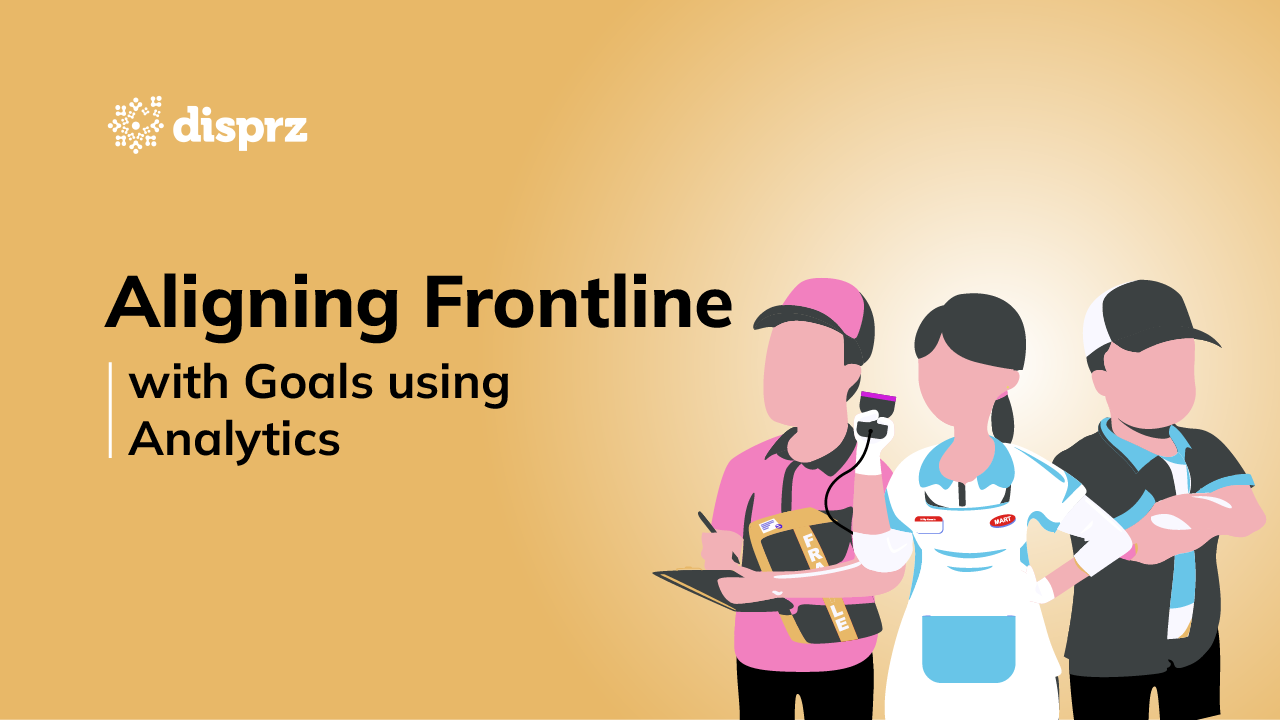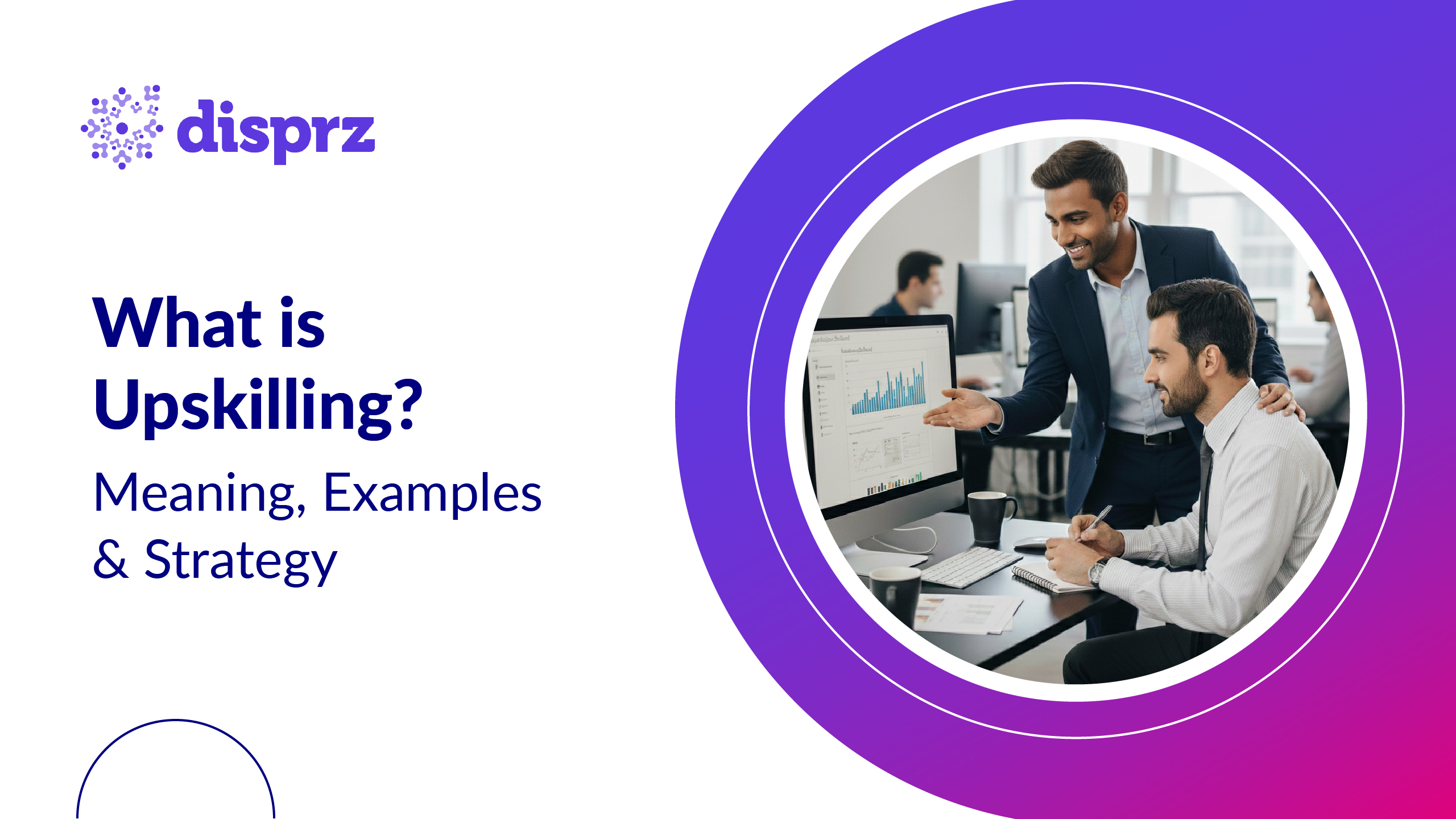Whether it’s your inventory or revenue, you rely on analytics to gauge the health of your business.
Analytics has great power, so why not blend it with learning to reach business goals quickly?
For example:
A retail store hired five new frontline employees. They created a five-day learning program to ensure these employees get a consistent onboarding experience to work efficiently at the store. Once they entered the store after successful onboarding, they were assigned courses to enhance their skills. Despite going through the same onboarding and upskilling journey, five excelled at their job, and three underperformed.
With assessment and analytics, the L&D team managed to find reasons why three were inefficient and how the rest of the two achieved success. Learning is incomplete with analytics. It is important to define the goal of the learning program and measure it in real-time using analytics.
Kuljit Chadha, Co-founder and COO of Disprz highlighted an interesting point during a recent webcast on upskilling frontline teams for business growth. He said, “ The most important point about the skilling program is to define the objective of the skilling program, from both the organization perspective and the employee perspective. If you are able to define the why part before starting the skilling program, half the battle is won.”
Priyanka Agarwal, Head of HR of a renowned retail firm shared an interesting point during the same webcast “For us to grow continuously, we need to grow our talent along with us. We need to constantly assess the employees to see whether they are growing to take higher roles. “
Assessment and analytics can help track if the employees are aligned with the business goals. Deep analytics is of paramount importance while upskilling or reskilling frontline employees.
Capability building should be synced with business outcomes
The growth of a company is directly dependent on the performance of the employees. Therefore companies need to build the frontline capabilities for reaching their goals. For instance, a company wants to develop a new digital service. This transformation requires specific capabilities to meet the expectations and sustain the benefits.
Identifying and building the required capabilities can have a positive impact on performance. However, to achieve a hundred percent result, it is important to ensure that the capability building is aligned with the business outcomes. Regular monitoring through analytics can help address areas of concern in real time. Special attention needs to be given to business metrics and KPIs to evaluate the impact of frontline learning and development of business performance.
The role of analytics in aligning frontline with business outcome
With digital acceleration, businesses have more pressure to add value to the customer experience to survive in the competitive landscape. Being the face of the company, frontline workers are at the forefront of an organization’s efforts to build customer loyalty and drive business success. Therefore they need to be equipped with the right knowledge and skills. Amassing the right analytics can help ensure that frontline employees are provided with the right skilling opportunities for reaching desirable business outcomes.
Here are things you can do by leveraging the power of analytics:
Measuring time to productivity during onboarding
Providing effective onboarding is crucial but measuring the journey is equally important. Once you create an onboarding process, you need to track if the employees are ready to proceed to on-the-job training.
For instance, you create a drip journey that, on Day 1, new hires will go through their roles and responsibilities.
On Day 2, the new hire will learn about your store and product.
On Day 3, the new frontline worker will go through videos on industry norms and safety protocols.
On Day 4, the new hire will take up an assignment.
Some employees might not be able to complete this journey in the stipulated time frame, and others might not score well in the assessment. Through clear analytics, you can see which modules have been shifted to which day and how long are the frontline employees taking to complete a module.
The Co-founder and COO of Disprz shared how their system helped in reducing time to productivity during onboarding. “From the distributed workforce, the biggest pain point is on onboarding. If a person can solve an onboarding problem and quantify it, half the problem is solved. An important data point to track during onboarding is time to productivity. Let’s say you are taking two months to take a store associate, prepare him and put him in the store. How can you reduce the time to productivity?
So we did an interesting thing on the Disprz platform: whenever anyone goes through an onboarding journey, we track points for every engagement he does. So when he does the learning modules, there are points given to him; when the buddy coaches him, points are given to him, the manager feedback points are given to him, and we converted those points and came up with something called a productivity score. There was a clear relationship: if a person got these many productive scores, he was ready to go to the store. So the management can view the productivity score of all onboarding people and say these five people are ready to remove them from a 30-day journey and directly put them in the store.”
KPI mapping and coaching on the job
Once the employee gets onboarded and engages in regular work, it is critical to map and track various KPI metrics to amass vital insights for improving performance. The employee should be clear of what is expected of them in regards to achieving business outcomes.
Disprz, an all-in-one skilling suite, allows you to map and define the KPI for the frontline workers. It enables KPI based coaching through KPI scores. There can be weekly, monthly or quarterly KPI as per different roles and requirements. For instance, a sales manager can have a monthly KPI, and a delivery associate can have a weekly KPI.
You can set a target value to track the KPI and coach the individual effectively. If you see the value dropping, you can instantly coach the frontline employees and help them improve their performance. For instance, a manager has four frontline employees in his team, so all the team members’ KPI scores are displayed on their learner dashboard. You can easily navigate, view the scorer and give real-time attention to the employee with the lowest score. In the Disprz, you can see the coaching history, view the employee strengths and accordingly plan the coaching.
Tracking learning behaviour and measuring the effectiveness of learning initiative
You invested time in finding the skill gap, defining skills for each role and creating impactful skilling journeys. Wouldn’t you want to see returns on your investments?
With the help of an analytics builder, you can delve deep into the insights that matter for your business. It enables seamless tracking of learning patterns and helps you measure the effectiveness of your learning programs. You can discover hidden insights from raw data to make better skilling decisions. It is a great way to identify the barriers that prevent your employees from completing the course.
Conclusion
Paying attention to the early indicators of success or failure can help you take real-time action. Analytics can help you amass insights and determine what needs to be changed in the current skilling model to boost completion. Instead of investing in an individual analytics tool, it is better to opt for a complete skilling suite that takes care of everything from onboarding to skilling and tracking the employees. Disprz is one such solution that not only helps create a personalized learning journey but also helps gather vital insights for creating meaningful learning journeys that align with the business goals.










